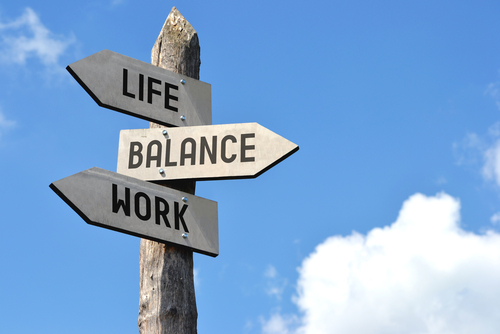Everyone, at some point, has experienced burnout and a lack of work-life balance. For the majority of today’s workforce, these feelings are stronger than ever given the everchanging climate, including the dynamics of how and when we work. While there is a myriad of reasons as to why we experience these things – overworking, lack of energy, etc. – it all results in the loss of productivity among workers and leads to feelings of stress.
We recently connected with Prasanth Nair, CEO and founder of productivity transformation company Double Gemini, to share tested insights into why workers are feeling overworked and not productive. Nair also spoke to a holistic model and strategies for addressing productivity obstacles that can help them get into the zone and achieve the holy grail of work-life balance.
Here’s what he had to say.
How would you describe the current state of today’s workforce?
PN: We are in the midst of what I refer to as “The Era of Lost Productivity.” Productivity challenges are the main culprit of today’s workforce turmoil and are causing a productivity crisis. If you look at the most recent productivity data from the Bureau of Labor Statistics, employers and employees are experiencing four quarters of productivity decline which has not happened in 40 years, since 1982.
There is a clear void in productivity that needs to be filled. It’s a void that is growing given the unknowns about a recession and how it can further stymie productivity and bottom lines. Even though productivity is viewed as critical for business and the economy, companies are struggling with how to address it given the new reality of hybrid work and the importance of collaboration between employees working inside and outside of the office.
Is this “Era of Loss Productivity” a Direct Result of the COVID-19 Pandemic?
PN: Surprisingly, no. Productivity challenges are an evergreen issue within our workforce. The pandemic exacerbated these challenges, but it was not the cause. Employers have long struggled with how to maximize productivity due to two main factors – destruction of attention and lack of collaboration – that lead to employees with fragmented minds, ultimately resulting in lower productivity and quality of output. When this happens, organizations risk increasing employee turnover as these employees will often look for other jobs.
What is a key process employers can introduce to mitigate against productivity challenges, and ultimately employee retention?
PN: While email management may not seem like the holy grail of productivity, inboxes are a major source of distraction for employees. Time spent reading through and searching for emails can lead to noticeable productivity losses. Consider how much time and mental capacity can be freed up when inboxes are at zero? If a leadership team makes clear to employees the importance of a managed inbox, and gives them the proper processes to achieve this goal, they’ll see more energized, creative and productive workers.
Can productivity processes improve workplace cultures and employee well-being?
PN: Absolutely. This “Era of Loss Productivity” coupled with the ongoing talent shortage has put employers on the precipice of having to completely transform how they create, nurture and grow productivity. Employers who don’t meet this challenge head on can risk their cultures, talent and ultimately the vitality of their organizations.
One certain within an organization is employees who feel burnt out and a lack of work life balance. These feelings may ebb and flow but for the majority of today’s workforce, they are stronger than ever given the changing dynamics of how and when we work. Employees often pivot to the same answers on what is causing these feelings, whether that be lack of energy or interruptions at home or work. In actuality, there is not one reason but a collection of reasons, which culminate in the loss of productivity among workers and exacerbate feelings of stress.
How did Double Gemini come to be?
PN: I came to realize that one of my key strengths is the ability to take complex things and simplify them to help people and processes move forward. This realization ultimately led me to start Double Gemini in 2000, a productivity transformation company that designs processes to improve productivity.
What differentiates us is our specialized ability to design productivity processes and deliver them as transformative training solutions across five core productivity areas – email management (Stack Method), email etiquette (Pulse Method), meeting management (Focus Method), project management (Vision Method), and Time & Task Management (Zone Method).
When organizations overlay these processes, they can achieve a complete productivity transformation through cultures that raise levels of consciousness, achieve equal access collaboration by creating parity between employees, and accelerate output. And over time, I believe these processes can take us from “The Era of Loss Productivity” to “The Productivity Economy.”
Prasanth Nair is the founder and product architect of Double Gemini, a productivity transformation company that designs processes to improve productivity.

